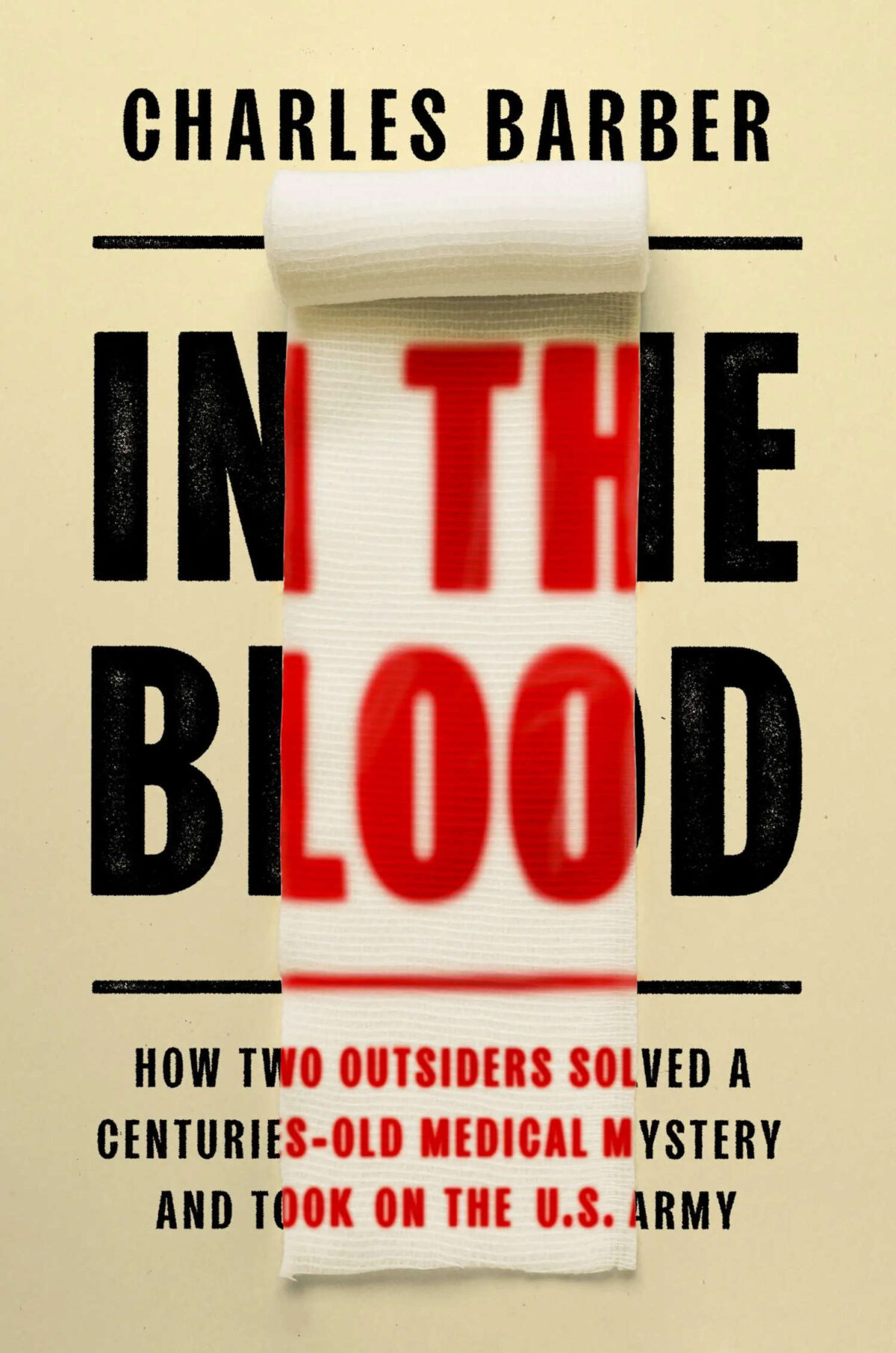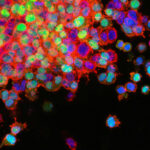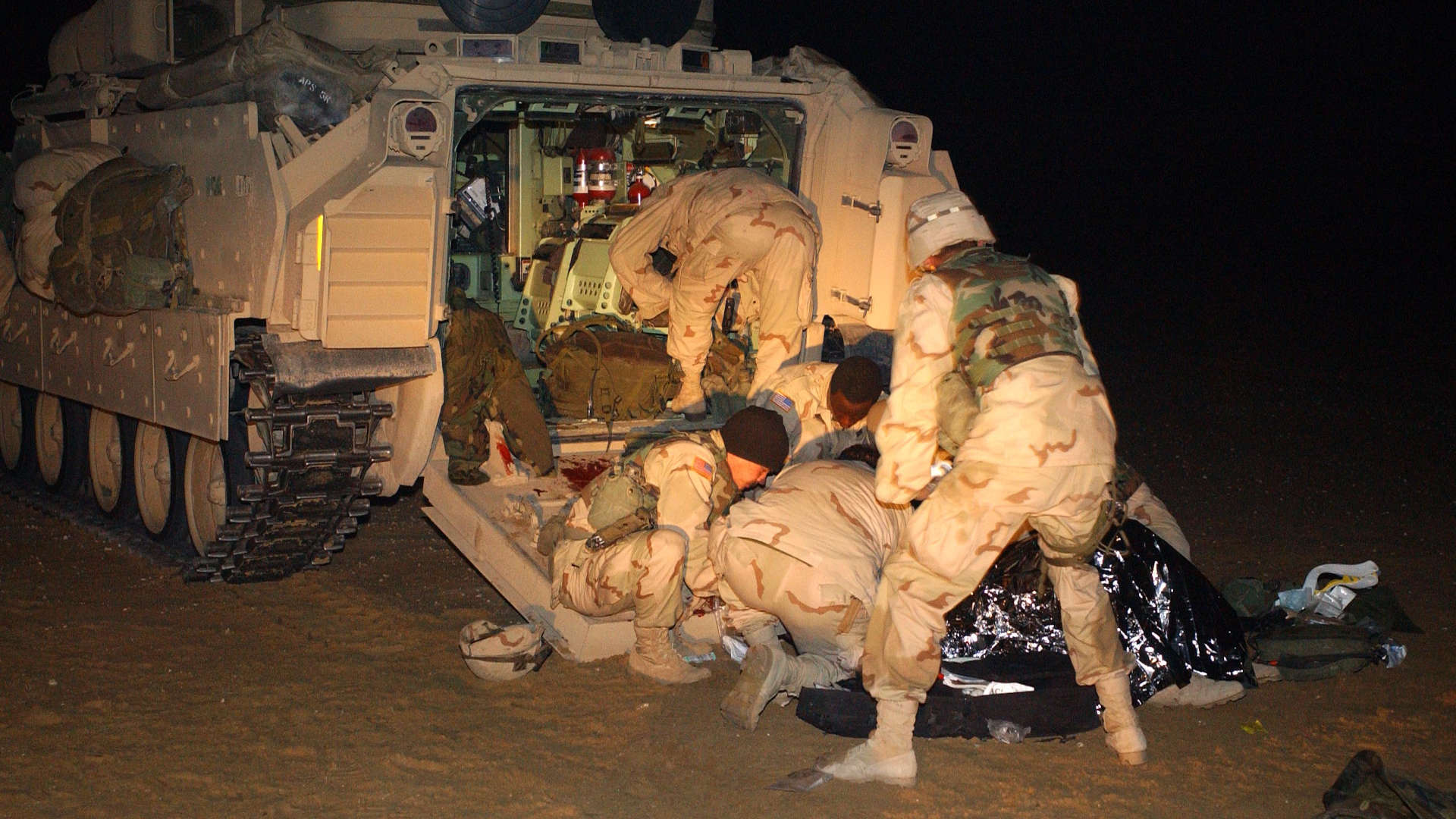In the aftermath of Sandy Hook, the 2012 elementary school shooting that killed 20 children, surgeons launched a national bleeding-control initiative to publicize the issue and train laypeople to “Stop the Bleed.” So far the program has reached more than a million Americans, and no doubt even more people might benefit from learning about hemostasis — how to stop excessive bleeding or hemorrhage. Trauma is, after all, the leading cause of death under 45. Even celebrities like Taylor Swift include hemostatic gauze as part of their everyday carry.
Charles Barber’s “In the Blood: How Two Outsiders Solved a Centuries-Old Medical Mystery and Took on the U.S. Army” is the fascinating origin story of several hemostatic techniques to stanch the bleeding. Fair warning: Limbs get blown off, military bros drop F-bombs, and the all-in battle between an obstinate institution (the U.S. Army) and two guys extolling crushed-up rock powder becomes a life-or-death matter.

BOOK REVIEW — “In the Blood: How Two Outsiders Solved a Centuries-Old Medical Mystery and Took On the U.S. Army,” by Charles Barber (Grand Central Publishing, 304 pages).
One of the most fundamental problems facing people with penetrating trauma is that, lacking immediate surgical care, they exsanguinate — that is, they bleed out and die. It’s a deceptively simple problem: How do you prevent a lethal amount of fluid from leaking out of the body? But it’s more than that, according to Barber, a writer in residence at Wesleyan University and a psychiatry lecturer at the Yale School of Medicine. “Blood is simultaneously largely invisible in our day-to-day lives and omnipresent in our cultures and consciousness,” he writes. “There remains something deeply mysterious about the liquid, and some of its basic facts are so mind-boggling that they don’t even seem plausible.”
For one thing, there’s lot of it: a gallon and half per person, circulating through some 60,000 miles of tubing. “Lose half of that amount over a few hours,” Barber writes, “and the patient is most likely dead.” While blood may be mostly water (the portion known as plasma), the lost fluid cannot be replaced with water but instead requires frozen plasma transfusions and other intravenous treatments.
And because blood courses through the brain and the heart as well as the skin, drugs that dissolve in the bloodstream and promote clotting might close a wound in one location while causing unwanted clots that damage other organs essential to life. “In the Blood” is the improbable tale of how a random dude tinkering in his basement managed to solve the age-old problem of how to make blood clot in the right spot.
In 1983, Frank Hursey, a plucky mechanical engineer in Connecticut who went on to found On-Site Gas Systems — a nitrogen and oxygen generator company — poured over microscopic images of a mineral called zeolite, marveling at its cavernous honeycombs of empty space. Then, working alone in his basement, he wondered if zeolite could serve as a sponge, sucking up the water out of blood, which, believe it or not, Barber writes, no scientist or blood researcher had conceived of before. To test his hypothesis, Hursey went to a pet store, bought a mouse, made an incision in its belly, and “inserted into the tiny wound a pinch of zeolite,” Barber writes. Incredibly, the wound clotted and stopped bleeding within 20 seconds. (The mouse survived, by the way.)
Five years later, after receiving a patent for his amazing discovery, he sent a flurry of letters to drug and medical care companies, but only received one reply — from the pharmaceutical giant Johnson & Johnson, which sent him a “withering sneer of a rejection letter,” Barber writes. The concept was shelved until 1999, when Bart Gullong, a Willy Loman-type who Barber describes as a “salesman with nothing to sell,” met Hursey at a pizza shop in New Britain, Connecticut. Gullong rather quickly teamed up with Hursey and eventually began selling zeolite as a blood-clotting agent.
In 2002, almost by chance, the two were included in an experiment led by researchers with the Office of Naval Research. Bart videotaped one procedure that involved pouring zeolite into a gushing six-inch gash on a pig’s thigh. The results blew away the competition. One researcher, Joseph Dacorta, delighted in the absurdity, Barber writes: “Here a number of biotech companies led by accomplished scientists had been working for years on a clotting agent, investing collectively, by Dacorta’s guess, hundreds of millions of dollars, and at the very last minute, two unknown and eccentric guys from Connecticut who had no medical or military training had found something that worked better than all the other products put together.”
Only there was an issue with the original patent: It had expired, which apparently made Gullong feel like smashing Hursey’s face into a desk. But the two managed to pull through, in one unlikely twist after another. Gullong resolved the patent issue, and the Food and Drug Administration approved the product, which came to be known as QuikClot, two short months after trial.
Barber then brings readers onto the battlefield during the United States’ 2003 invasion of Iraq, where the Navy tested out QuikClot in the field. A lieutenant commander named Timothy Coakley poured the powder into a bullet hole in a Marine private’s neck in the desert, and it appeared to work “like science fiction,” Barber writes. When Coakley returned from the war, he agreed to promote the product on the medical conference circuit. At one stop, however, he ran into a key adversary: the U.S. Army.
The Army critics hectored him, Barber writes, like a gang spoiling for a fight. The intrigue thickened when Coakley reached out to shake hands with John Holcomb, head of the Army’s renowned Institute of Surgical Research, and was rebuffed.
The Army, after all, was experimenting with its own products, pouring millions into a high-tech bandage dubbed as a “biologic glue” developed with the Red Cross. When that failed, Holcomb pivoted to a drug developed by Novo Nordisk called Factor Seven. Military doctors deployed Factor Seven in Iraq but the experimental use of the drug also failed.
While the Navy and the Marines rapidly adopted QuikClot, the Army seemed bent on smearing the product’s reputation and withholding it — even after reports surfaced that the Factor Seven caused young soldiers to have “weirdo” strokes, Barber writes. That decision, he maintains, ultimately cost lives and reflected the long and ignoble history “of favoring failed products made by military insiders over effective products made by outside innovators who had no political clout.”
Barber neatly plots QuikClot’s unusual path to market: first approved as a medical device, then tested on the battlefield, and eventually sold to the public as a line of gauze products. (The combat version comes in a nondescript, gray-green packet.) Portions of the story have been told before — Barber specifically thanks Robert Little, formerly of The Baltimore Sun, whose reporting on Factor Seven preceded Holcomb’s getting called before the U.S. Senate for questioning. While the endnotes and acknowledgements note previous reporting, Barber relies extensively on detailed interviews with Frank and Bart (he calls them by their first names throughout the book). At times, in fact, it reads like a ghostwritten memoir.
Barber’s propulsive narrative has its quirks — in particular, his enthusiasm for deploying questions as a rhetorical device. (When Hursey observes his mouse experiment, for example, Barber writes: “Could this really be happening, or was it a trick of the mind?”) And his dramatic rendering of his protagonists’ adventures can be a bit too pat, like a buddy movie where the good guys overcome a series of bumps but manage to save the day.
The legacy of the mad scramble to stanch the bleeding is, of course, complicated. Barber acknowledges that Holcomb and the Army were more than one-dimensional villains promoting the failed Factor Seven, since their efforts also helped revive tourniquet use and facilitated the development of lifesaving blood transfusion protocols. And it was an entire team — not just the two central characters — that labored to get QuikClot included in many emergency medical kits.
In Barber’s account, though, there’s never really any question about who to root for. As the subtitle makes clear, it’s intended as a page-turning yarn about underdogs accomplishing the seemingly impossible. (This being a true tale of medical innovation in America, however, the heroic duo sell out to private equity in the end.)
“There are scientists who have won the Nobel Prize for less,” Barber writes. “Frank changed the paradigm; he not only halted bleeding, he also took bleeding control largely out of the hands of doctors with their vials of Factor Seven put it into the hands of police officers, EMTs, adventurers, soldiers, hikers, and moms and dads.”
Peter Andrey Smith is a freelance reporter. His stories have been featured in Science, STAT, The New York Times, and WNYC Radiolab.











Comments are automatically closed one year after article publication. Archived comments are below.
Quite interesting. I never had heard about this use for zeolite.
Is the product still available ? Does it require a prescription ?
Where can I find more information about it?
The product has been reformulated and is available over-the-counter, e.g. https://shop.stopthebleedcoalition.org/product/quikclot-bleeding-control-dressing/